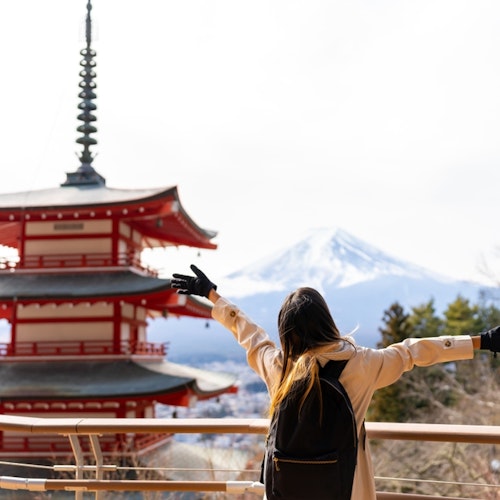Complete Guide to Hiroshima: History, Culture, and Modern Charm


In Japan's heart, Hiroshima blends poignant history with vibrant modernity. From the profound impact of the atomic bomb to the charming streets lined with cherry blossoms, Hiroshima offers an array of experiences for every traveler.
This guide will introduce you to Hiroshima's rich history, cultural activities, and modern attractions, ensuring your visit to this captivating city is informative and unforgettable.
History of Hiroshima

Hiroshima's history is deeply marked by the events of World War II, particularly the dropping of the first atomic bomb on August 6, 1945. The city, originally constructed during the Edo period, quickly became a center of commerce and culture.
The devastating power of the atomic bombing led to immense destruction and loss of life, including the tragic deaths of many atomic bomb victims. Today, the Atomic Bomb Dome stands as a solemn reminder of this dark history and is part of the Hiroshima Peace Memorial Park, a UNESCO World Heritage Site dedicated to promoting peace and educating future generations about the horrors of nuclear weapons.
The Hiroshima Peace Memorial Museum within the park offers a comprehensive look at the events surrounding the bombing and its aftermath, making it a vital stop for anyone wanting to understand the city's past. Despite its tragic history, Hiroshima has rebuilt itself into a vibrant town, symbolizing resilience and hope.
Must-Try Cultural Activities in Hiroshima
Visit Hiroshima Peace Memorial Park

This serene park is a powerful tribute to the victims of the atomic bombing. Key monuments include the Children's Peace Monument, dedicated to Sadako Sasaki and the thousands of child victims.
Inspired by Sadako's story of folding 1,000 paper cranes while battling leukemia caused by radiation, the monument symbolizes peace and hope, with cranes sent from around the world displayed nearby. Another significant site is the Hiroshima National Peace Memorial Hall for the Atomic Bomb Victims, which offers a contemplative space to remember those who perished.
It features a circular panorama of Hiroshima before and after the bombing.

Discover Hiroshima's poignant history and vibrant present on a 4.5-hour walking tour.
Experience Hiroshima Style Okonomiyaki

Savor this beloved local cuisine, a savory pancake unique to Hiroshima. Unlike the more common Kansai style, Hiroshima okonomiyaki features layers of ingredients rather than a mixed batter. It includes a base of thin pancakes topped with cabbage, bean sprouts, pork, and noodles (either yakisoba or udon), all finished with a delicious savory-sweet sauce.
Known as Hiroshima's "soul food," this dish is a must-try for its rich flavors and the cultural experience of watching it being expertly prepared on a hot plate.

Taste local specialties like okonomiyaki and oysters at three popular izakayas.
Tour Hiroshima Castle

Also known as Carp Castle, this iconic structure was built in the 1590s by the feudal lord Mori Terumoto. Destroyed by the atomic bomb in 1945, the castle was meticulously reconstructed in 1958 and now serves as a museum.
Visitors can explore exhibits detailing the history of Hiroshima before the war, including samurai culture and the castle's strategic importance. The top floor offers a panoramic view of Hiroshima city, providing a unique perspective on its historical and modern landscapes.
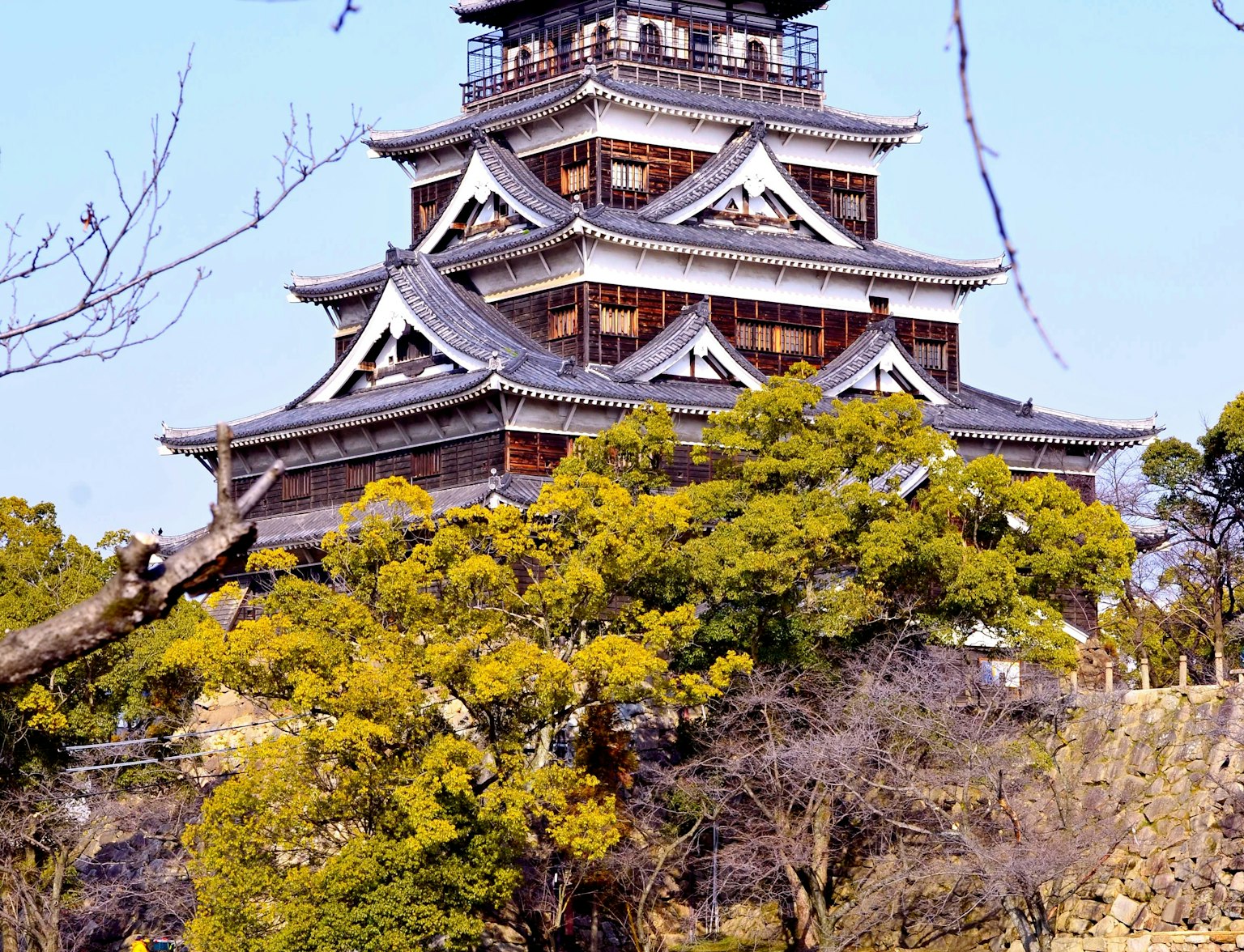
Explore the history of samurai lords in the restored castle.
Stroll Through Shukkei-en Garden

Enjoy a relaxing stroll in this historic garden, initially constructed in 1620 by Ueda Soko, a famous tea master. The garden is designed to replicate natural landscapes in miniature, featuring valleys, mountains, and forests within its compact space.
Walking along its winding paths, you'll encounter scenic ponds, elegant bridges, and traditional tea houses. Shukkei-en Garden offers a serene escape in the heart of Hiroshima, making it a must-visit for nature and history enthusiasts.

Experience tranquil walks in Shukkei-en Garden, a serene escape from the crowds.
Explore Itsukushima Shrine on Miyajima Island

Itsukushima Shrine is one of Japan's most picturesque sites. Renowned for its iconic floating torii gate, which appears to float on the water during high tide, It is a UNESCO World Heritage Site dedicated to the deities of sea and storms, reflecting the island's spiritual significance.
Visitors can enjoy breathtaking views, especially at sunset, and explore the serene surroundings of Miyajima Island, which also offers hiking trails and charming local shops. The island's rich cultural heritage and natural beauty make it an essential stop on any Hiroshima itinerary.

Explore Peace Memorial Park, Miyajima Island, and Itsukushima Shrine, all tailored to your preferences.
Visit Mitaki-Dera Temple

Mitaki-Dera Temple, founded in 809, is a serene Shingon Buddhist temple located on the slopes of Mount Mitaki in Hiroshima. This historic site is renowned for its three waterfalls, which named the temple "Mitaki," meaning "three waterfalls temple."
The temple grounds are enveloped in lush greenery and feature numerous Buddhist statues, creating a tranquil atmosphere ideal for reflection. Notable structures include the Tahōtō pagoda, relocated here in 1951 to memorialize the victims of the atomic bombing.
Visitors often come to enjoy the cherry blossoms in spring and the vibrant red leaves in autumn, making it a picturesque and peaceful retreat.

Begin Your Day with a Spiritual Respite at Mitaki-dera Temple.
Take a Guided Tour of Rabbit Island (Okunoshima Island)
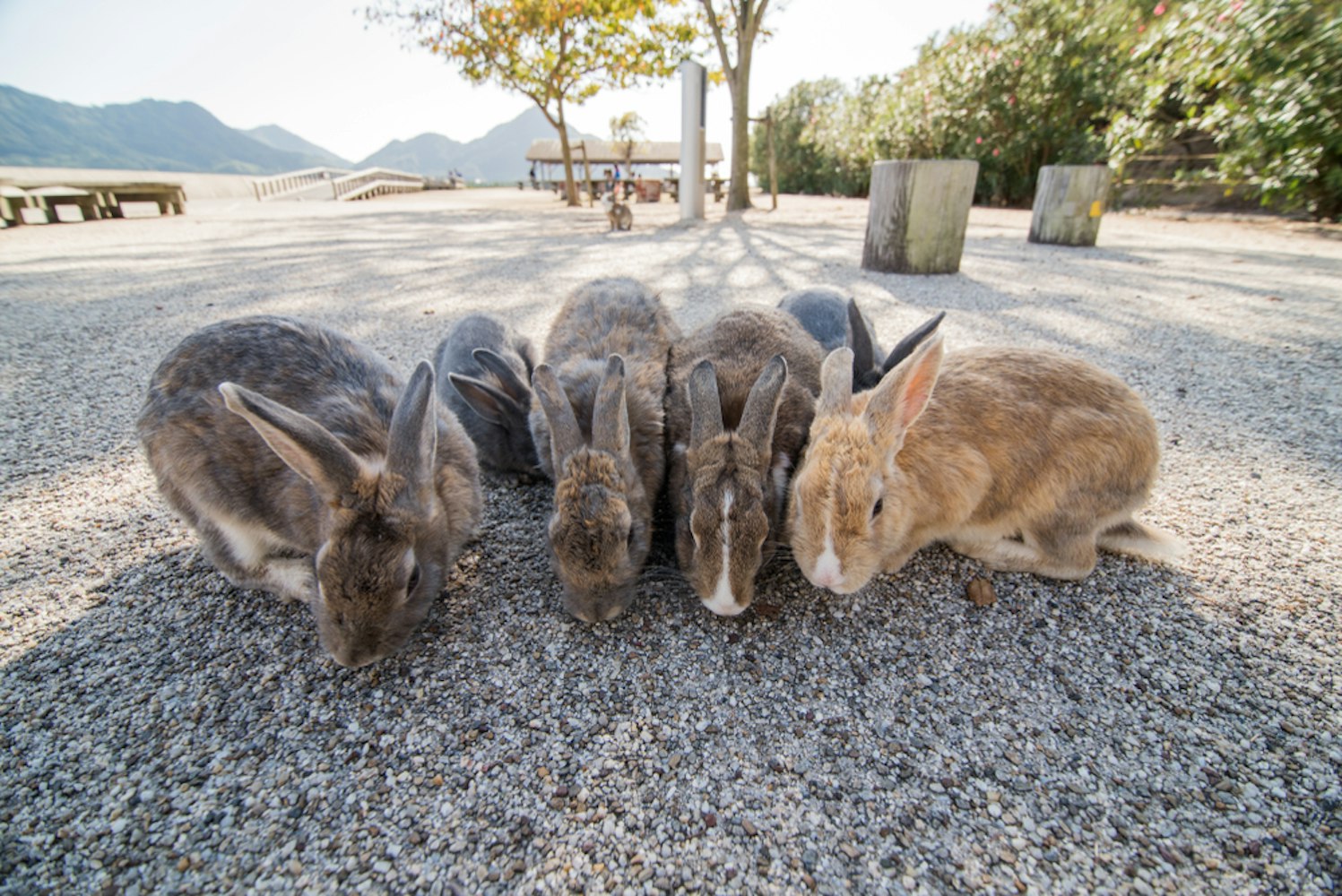
This small island in the Seto Inland Sea is home to hundreds of friendly rabbits that roam freely, making it a unique and delightful destination. The island has a dark history as a former secret site for chemical weapon production during World War II, but it has now been repurposed into a peaceful haven.
Visitors can feed and interact with the rabbits, offering a charming and heartwarming experience. The island is accessible by ferry, and guided tours often include historical insights, enhancing the overall visit.

Embark on a voyage of discovery and delight to the enchanting Okunoshima Island.
Must-Visit Modern Attractions in Hiroshima
Hiroshima Peace Memorial Museum

This museum offers a comprehensive and poignant look at the atomic bombing of Hiroshima, featuring detailed exhibits that highlight personal stories and historical artifacts. The main building focuses on the events leading up to and immediately following the bombing, while the East Building provides context on nuclear weapons and international efforts for peace.
Personal items, photographs, and survivor testimonies provide a profoundly moving experience for visitors. Located within the Hiroshima Peace Memorial Park, the museum plays a crucial role in educating future generations about the impact of nuclear weapons and the importance of peace.

Discover the profound history and natural splendor of Hiroshima and Miyajima.
Mazda Museum
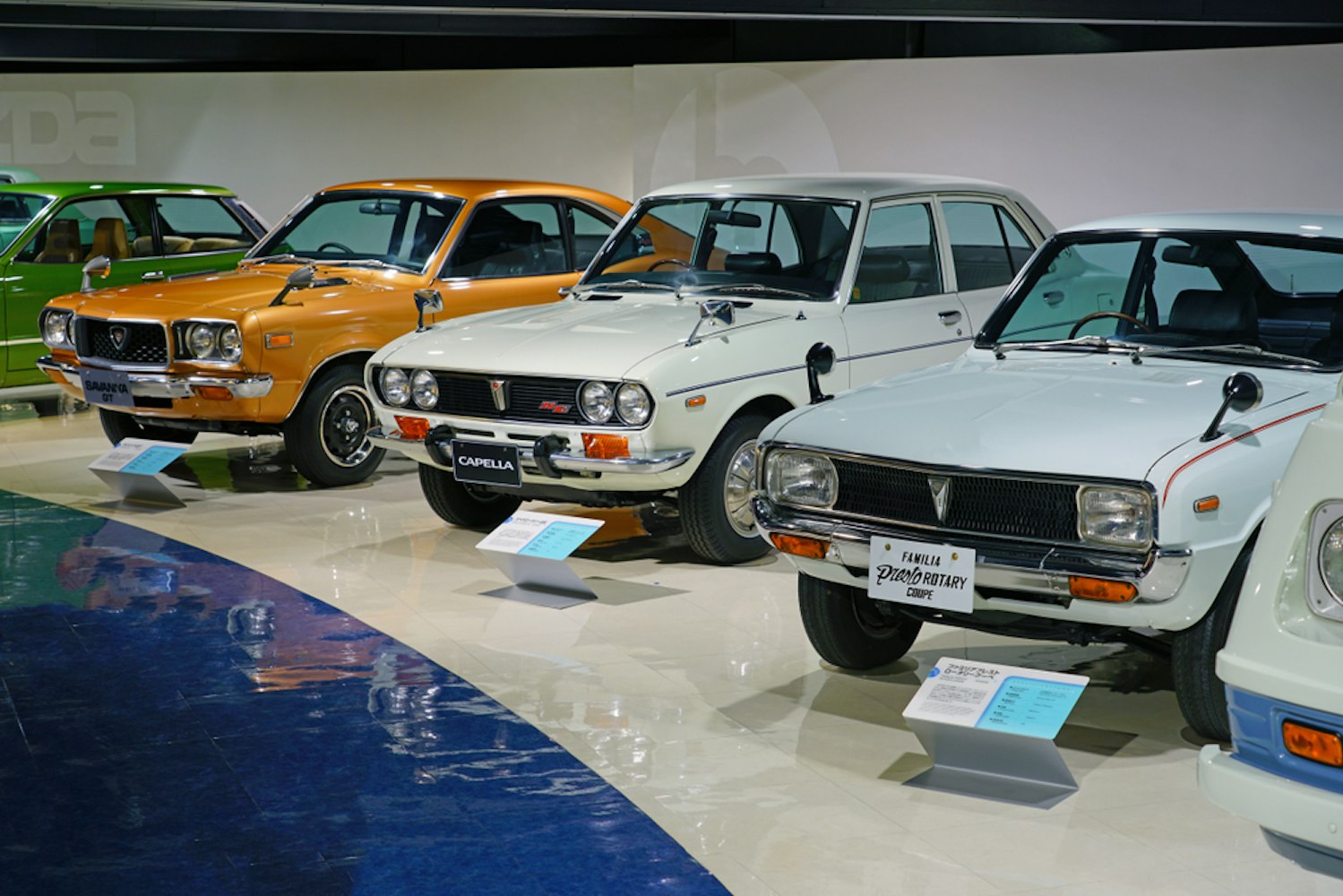
Discover Mazda's rich history and innovative future at the museum near Hiroshima. One of Japan's most renowned car manufacturers, Mazda is a pioneer in automotive technology.
It offers a comprehensive look at Mazda's evolution, featuring classic models and cutting-edge technology. Visitors can take a guided tour of the assembly line, witnessing the meticulous craftsmanship and advanced manufacturing processes.
The museum also includes interactive exhibits and a gift shop, making it a must-visit for car enthusiasts and curious travelers.
Hiroshima Bay
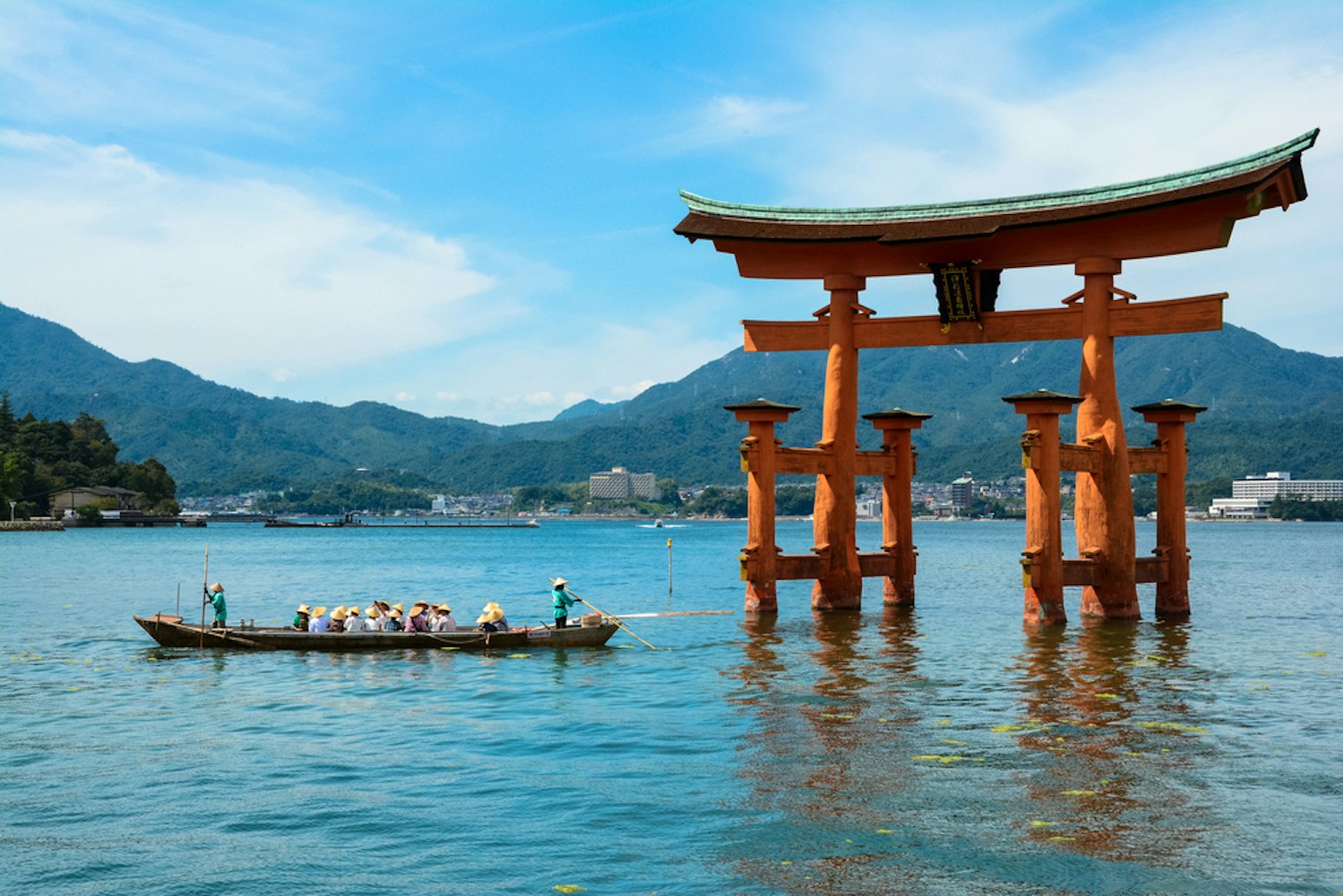
This picturesque bay area offers stunning scenic views and a variety of water activities, making it a must-visit modern attraction. Visitors can enjoy boat cruises that provide panoramic views of the Seto Inland Sea and the iconic Itsukushima Shrine's floating torii gate.
The bay is also famous for kayaking, paddleboarding, and fishing, catering to adventure enthusiasts and those seeking a relaxing day on the water. With its beautiful surroundings and diverse activities, Hiroshima Bay is a perfect spot to experience the region's natural beauty and recreational opportunities.
Peace Boulevard

This major thoroughfare in Hiroshima's city centre stretches over four kilometers and is lined with lush trees and significant monuments. Established after World War II as part of the city's reconstruction, it symbolizes peace and renewal.
The boulevard is perfect for leisure, offering scenic views and access to various Hiroshima attractions, including the Hiroshima Peace Park and the Atomic Bomb Dome. Visitors can also enjoy the numerous cafes and shops that line this vibrant street, making it a lively part of the city's modern charm.

Embark on an e-bike adventure through Hiroshima, guided by a local expert.
Hiroshima Station

As the city's central transportation hub, Hiroshima Station provides easy access to all major cities in Japan, including Tokyo, Osaka, and Kyoto, via the Japan Rail Pass. The station is a modern complex with numerous amenities, including shopping centers, restaurants, and hotels, making it a convenient base for travelers.
Its strategic location ensures efficient connectivity with local trams and buses, facilitating seamless exploration of Hiroshima's attractions. Whether you're arriving or departing, Hiroshima Station offers a gateway to the city's rich cultural and historical experiences.
Onomichi City
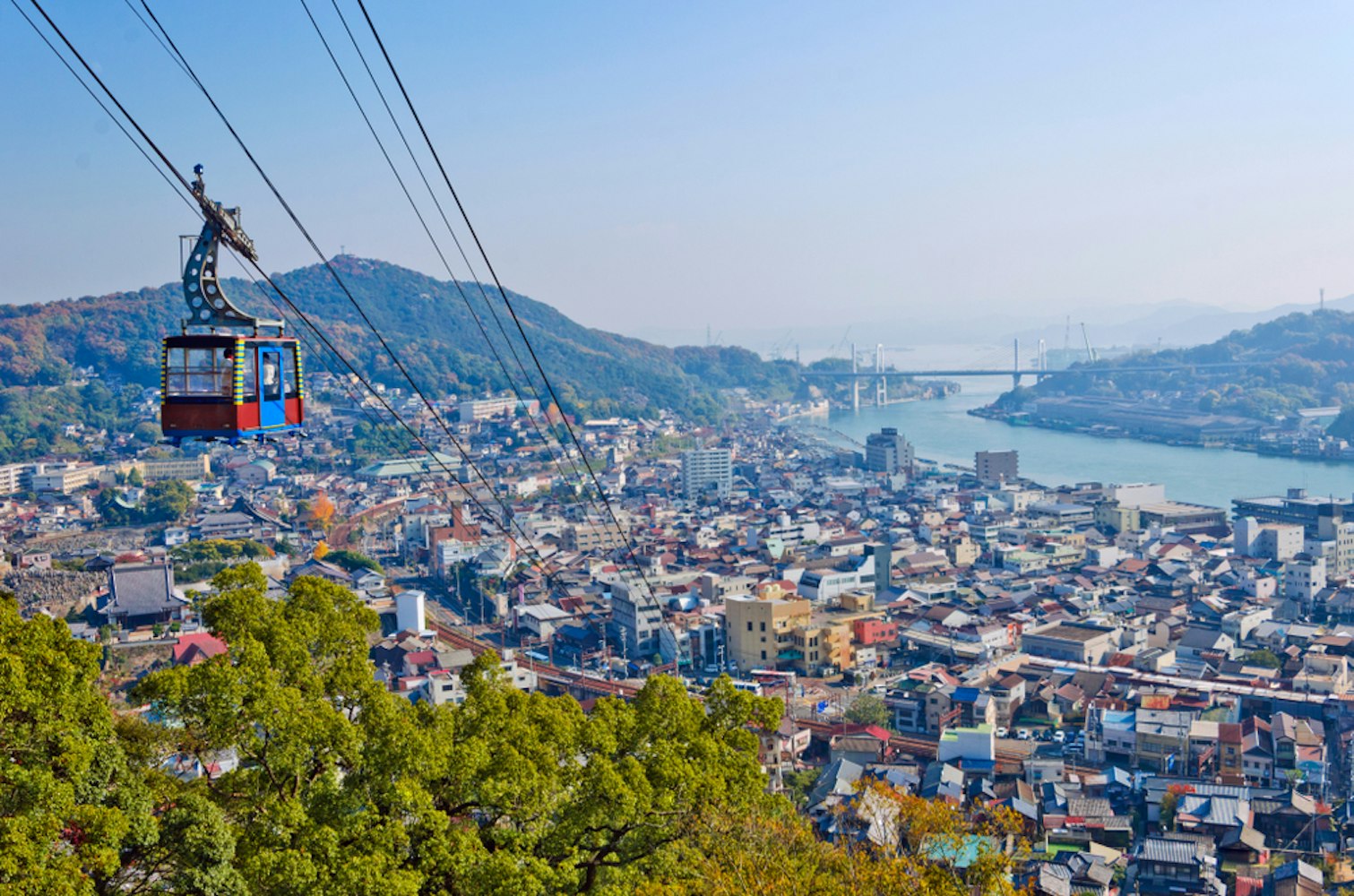
A charming coastal town near Hiroshima, Onomichi is renowned for its picturesque temples and scenic views. Visitors can enjoy a cable car ride up Mt. Senkoji for breathtaking panoramas of the city and the Seto Inland Sea.
The town is also famous for its literary history and cat alley, a quirky street lined with feline-themed attractions. With its blend of cultural heritage and unique sights, Onomichi offers a delightful escape from the bustling city.
Hiroshima Prefecture Art Museum

Located near Shukkei-en Garden, the Hiroshima Prefecture Art Museum features an impressive collection of local and international art, showcasing works from the Edo period to contemporary pieces. The museum is known for its rotating exhibits, often including masterpieces from famous artists worldwide.
Visitors can also enjoy the museum's serene garden and tea room, which provide a relaxing cultural experience. With its diverse collection and tranquil setting, the Hiroshima Prefecture Art Museum is a must-visit for art enthusiasts.
Hiroshima City Asa Zoological Park

This family-friendly attraction features over 150 species of animals, providing a fun and educational experience for visitors of all ages. The park includes interactive experiences like feeding times and animal shows, allowing for closer encounters with the wildlife.
Spread across a spacious and well-maintained area; the zoo offers a relaxing environment with beautiful views of the surrounding Asa mountains. Easily accessible by public transportation, it's an excellent destination for a day trip in Hiroshima.
How to Get There
Hiroshima is easily accessible by various modes of transportation. The most convenient way to reach Hiroshima is by using the Japan Rail Pass, which offers efficient and comfortable travel on the Shinkansen bullet trains.
Hiroshima Station, located in the heart of the city, serves as a central transportation hub connecting to other major cities like Tokyo and Osaka. For those flying in, Hiroshima Airport offers domestic and international flights, with easy access to the city via shuttle buses.
Once in Hiroshima, the city's public transportation system, including trams and buses, makes getting around convenient and straightforward.

Join us for an unforgettable day trip from Kyoto to the historic sites of Hiroshima.
A City of Contrasts and Charm
Hiroshima is a city of contrasts, where history's profound weight meets modern life's vibrancy. From exploring the Hiroshima Peace Memorial Park to savoring local delicacies and enjoying the picturesque views of Hiroshima Bay, there are countless things to do in Hiroshima that cater to all interests.
Whether you're delving into its historical past or experiencing its cultural richness and modern charm, Hiroshima promises a unique and unforgettable journey. Plan your Hiroshima itinerary now and discover the many attractions that make this city a must-visit destination in Japan.
FAQs
How many days do you need to spend in Hiroshima?
Two days is sufficient to experience the highlights of Hiroshima.
What is Hiroshima best known for?
Hiroshima, the vibrant capital of Hiroshima Prefecture, boasts a complex history, delicious cuisine, and welcoming locals. Though it is most renowned for the devastation caused by a nuclear attack at the end of World War II, the city embraces its past with a spirit of resilience. Rather than dwelling in sorrow, Hiroshima promotes peace and understanding, making it a city of hope and renewal.
Is Hiroshima closer to Kyoto or Osaka?
Hiroshima is just 1 hour and 42 minutes from Kyoto on the fastest shinkansen (bullet train). From Osaka, it's only 1 hour and 33 minutes.
What is the best food to eat in Hiroshima?
Hiroshima-yaki (Hiroshima Okonomiyaki)
Kaki (Oysters)
Lemons
Anago (Saltwater Eel)
Spicy Tsukemen
Japanese Sake
Onomichi Ramen
Koiwashi (Baby Sardines)
How long is the bullet train from Tokyo to Hiroshima?
About 4 hours



